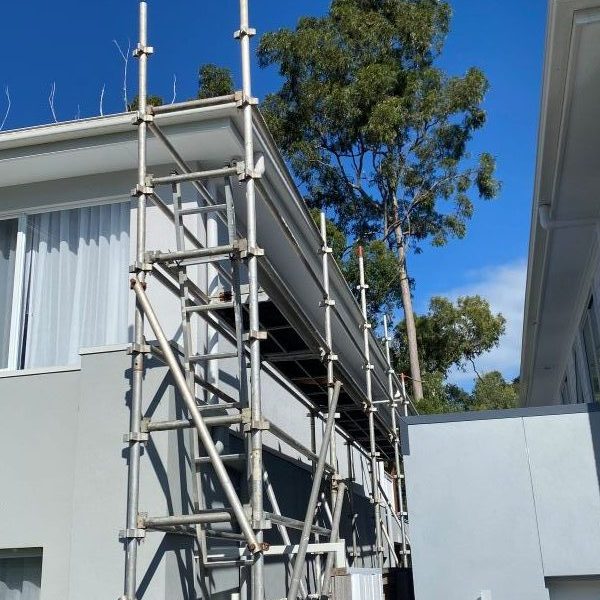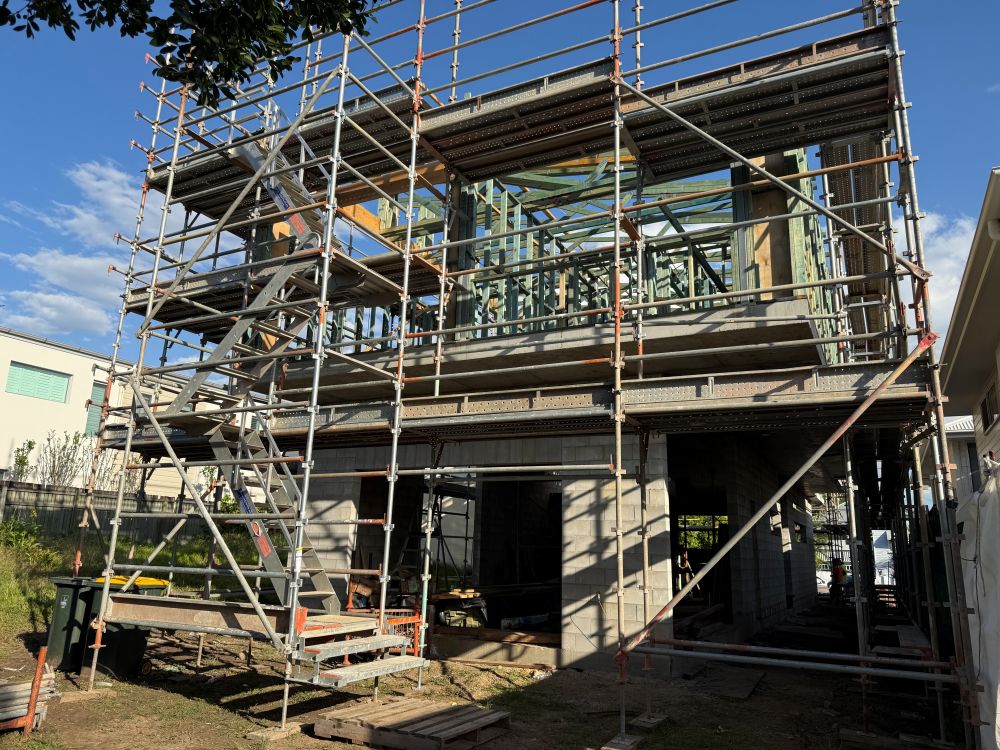Essential Strategies for Optimising Scaffold Load Capacity: Ensuring Safety and Legal Compliance in Construction
The concept of scaffold load capacity is crucial in the construction industry, as it defines the maximum weight that a scaffold can safely bear during various activities. This vital consideration encompasses three primary categories of loads, each of which must be meticulously assessed:
- The weight of the scaffold itself, often termed the dead load, which constitutes the inherent weight of the scaffolding structure.
- The weight of workers, along with their tools and materials that are placed on the scaffold, known as the live load, which varies based on the number of personnel and equipment.
- External forces, such as wind, rain, or vibrations that may act upon the scaffold, classified as environmental load, which can significantly impact stability.
Comprehending these various loads is imperative, as they directly affect the overall stress exerted on a scaffold during its operational phase. It is not merely advisable but a legal obligation under Australian law to ensure the safety of all personnel involved in construction activities by strictly adhering to these calculations.

Comprehensive Step-by-Step Guide for Effectively Using Our Scaffold Load and Height Calculator
While there is no universal formula applicable to every scaffold configuration, our scaffold calculator offers a user-friendly interface that enables users to obtain precise estimates by simplifying essential variables. This tool is designed specifically for residential builders, homeowners, and scaffold hire professionals, all of whom must operate in accordance with the guidelines established by Australian OHS standards.
Step 1: Determine the Type of Work Required
Begin by identifying the specific nature of the work to be carried out, which may include tasks such as roof restoration, exterior painting, solar panel installation, cladding, or rendering.
Step 2: Indicate the Number of Workers Involved
For instance, you might input the number of workers, such as two individuals who will be operating simultaneously on the scaffold platform during the project.
Step 3: Estimate the Weight of Materials to be Used
This may involve estimating approximately 120 kg worth of rendering materials or tools that will be utilised throughout the duration of the project, ensuring an accurate assessment.
Step 4: Specify the Height of the Scaffold Platform
For example, the height could be established at 4.5 metres above ground level, which is critical for accurate calculations.
After entering this information, the calculator will provide a recommended scaffold configuration that includes:
- The appropriate duty class (such as Light, Medium, or Heavy) based on the specifics of your project.
- An estimation of the Safe Working Load (SWL) per bay, ensuring compliance with safety standards.
- The recommended type of scaffold (for example, aluminium tower or steel frame) suitable for the job.
- Essential safety features required, including guardrails, soleplates, and stabilisers to enhance safety.
- Any compliance triggers associated with height (such as tie-offs mandated for platforms exceeding 4 metres).
Understanding the Reasons Behind the Absence of a Universal Load Formula for Scaffolding
Although the scaffold calculator serves as a practical tool for generating estimates, scaffolders and engineers do not depend solely on a singular formula. This is due to several critical factors:
- Scaffold systems vary significantly in terms of material and design, including options such as aluminium, steel, modular, and tube-and-coupler scaffolds.
- The intended use of the scaffold greatly influences its load capacity, with stark differences in requirements for painting compared to masonry work.
- Different manufacturers provide various platform strength and component ratings, leading to discrepancies in load calculations.
Industry Standard Approach for Calculating Safe Working Load (SWL)
Professionals within the scaffolding industry frequently refer to the following formula as a foundational guideline for estimating:
Safe Working Load (SWL) per bay = (Platform Load Rating × Safety Factor) – Weight of Scaffold Components
Illustrative Example:
- A platform rated for a maximum load of 600 kg indicates substantial capacity.
- Applying a 4:1 safety margin: using only 25% of the rating yields 150 kg for operational use.
- Subtracting the scaffold structure's weight, which is 100 kg, is critical for accurate calculations.
- The resultant usable working load is 50 kg, which serves as a conservative estimate and may not fully reflect actual planning requirements.
Due to the complexities associated with real-world conditions, professional scaffolders typically adhere to manufacturer guidelines, engineering tables, and local codes, rather than relying solely on this simplified formula.

Implementing Best Practices for Scaffold Evaluations by Industry Professionals
Professional scaffold evaluations typically encompass several critical components to ensure safety and compliance:
- Reviewing manufacturer load data and validated span ratings for accuracy, ensuring that the materials meet safety standards.
- Calculating the total live, dead, and environmental loads to ascertain safety and compliance with regulations.
- Ensuring adherence to AS/NZS duty class specifications to meet and exceed industry standards.
- Securing engineering sign-off for any custom or elevated scaffold configurations that deviate from standard practices.
- Conducting comprehensive visual and structural inspections prior to scaffold use to identify and mitigate any potential hazards.
Adjusting Scaffold Practices in Response to Environmental Conditions and Site-Specific Factors
Managing Wind Exposure in Coastal Queensland
In areas classified under wind zones N3 and N4, the lateral forces exerted on scaffolds can be significantly increased. Consequently, it is essential for scaffolds to be secured at shorter intervals, and additional bracing or shade cloth may be necessary, particularly during high-wind seasons, to ensure stability and safety.
Considerations for Soil and Ground Types
When encountering unstable or sloped soil conditions, employing soleplates and adjustable base jacks is vital for enhancing scaffold stability. Furthermore, sites with varying elevations may necessitate the implementation of levelled bay systems to maintain a secure working environment.
Regulations Governing Work Above Four Metres
In Queensland, any platform exceeding a height of four metres requires thorough inspection and certification. A scaffold handover certificate is mandated under the Work Health and Safety Regulation 2011, ensuring compliance with established safety standards.
Essential Safety Regulations to Comply With in Scaffold Operations
- Work Health and Safety Regulation 2011 (QLD), which outlines the requirements for scaffold safety.
- Managing the Risk of Falls at Workplaces (Code of Practice, 2021), which provides guidelines for fall protection.
- AS/NZS 1576 and AS/NZS 4576 Standards that dictate safety requirements for scaffolding.
- High Risk Work Licence (HRWL) is obligatory for any scaffold setup above four metres, ensuring that only qualified personnel handle such structures.
Site supervisors hold the responsibility for conducting regular inspections, particularly after adverse weather events or significant changes in scaffold height or load, to ensure ongoing compliance with safety regulations and to mitigate risks effectively.
Illustrative Case Study: Scaffold Implementation in Robina
In a recent undertaking on the Gold Coast, a homeowner in Robina required scaffolding for the purpose of repainting and rendering a two-storey exterior wall. The working height for this project was established at five metres, with two tradespeople utilising approximately 200 kg of rendering materials and tools throughout the course of the work.
Utilising our scaffold calculator, the recommended configuration was outlined as follows:
- Scaffold class: Medium Duty, which is deemed suitable for the task at hand.
- System type: Steel frame equipped with timber planks to ensure durability and stability.
- Additional safety measures: Comprehensive edge protection, soleplates designed for soft earth conditions, and wind mesh to mitigate wind exposure.
The scaffold successfully passed all necessary inspections and adhered to Queensland’s OHS regulations, resulting in zero downtime throughout the duration of the project.
Key Considerations for Scaffold Height and Load Capacity Calculations
Determining scaffold height and load capacity should never be approached as mere guesswork. In residential projects, this meticulous process is crucial for ensuring safety, managing costs effectively, and achieving compliance with local regulations.
Given the specific requirements applicable to Australian conditions, particularly in southeast Queensland, we strongly recommend obtaining an accurate scaffolding quote and ensuring that all installations are conducted by qualified professionals.
Get in Touch with CanDo Scaffolding Hire for Expert Guidance and Tailored Services
For further information regarding our comprehensive range of services, please do not hesitate to reach out to us at 1300 226 336 or send an email to theguys@cando.com.au at your convenience.
We offer an extensive selection of scaffolding solutions, including void protection platforms and roof edge protection, customised to meet the specific needs of any residential or light commercial construction project.
Understanding Scaffold Load Capacity for Residential Projects
The Article: Scaffold Load Capacity Insights for Residential Projects first appeared on https://writebuff.com
The Article Scaffold Load Capacity for Residential Construction Projects Was Found On https://limitsofstrategy.com

